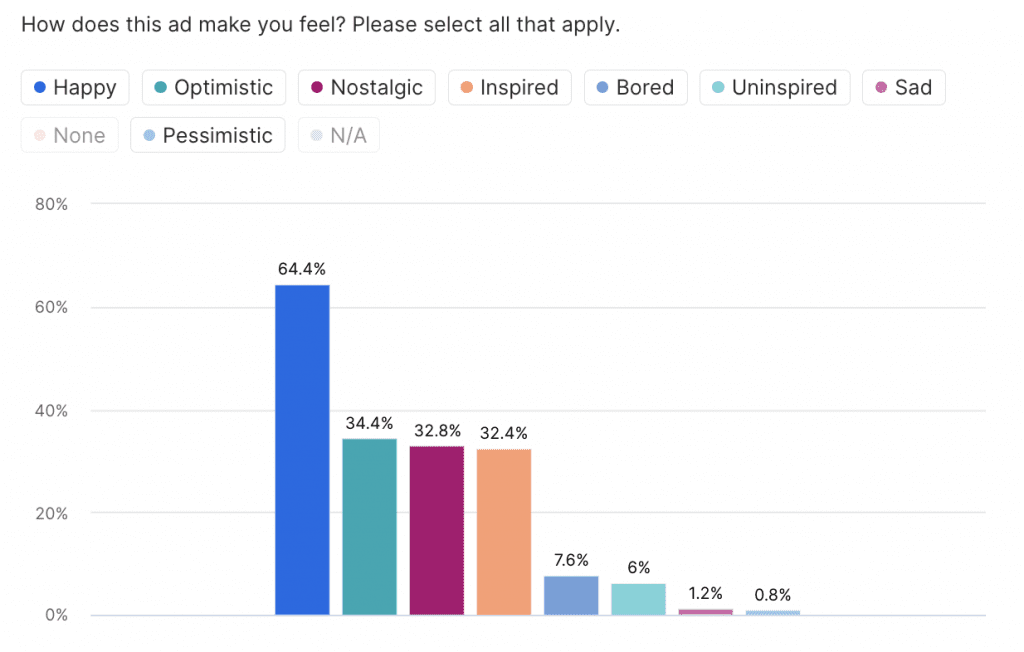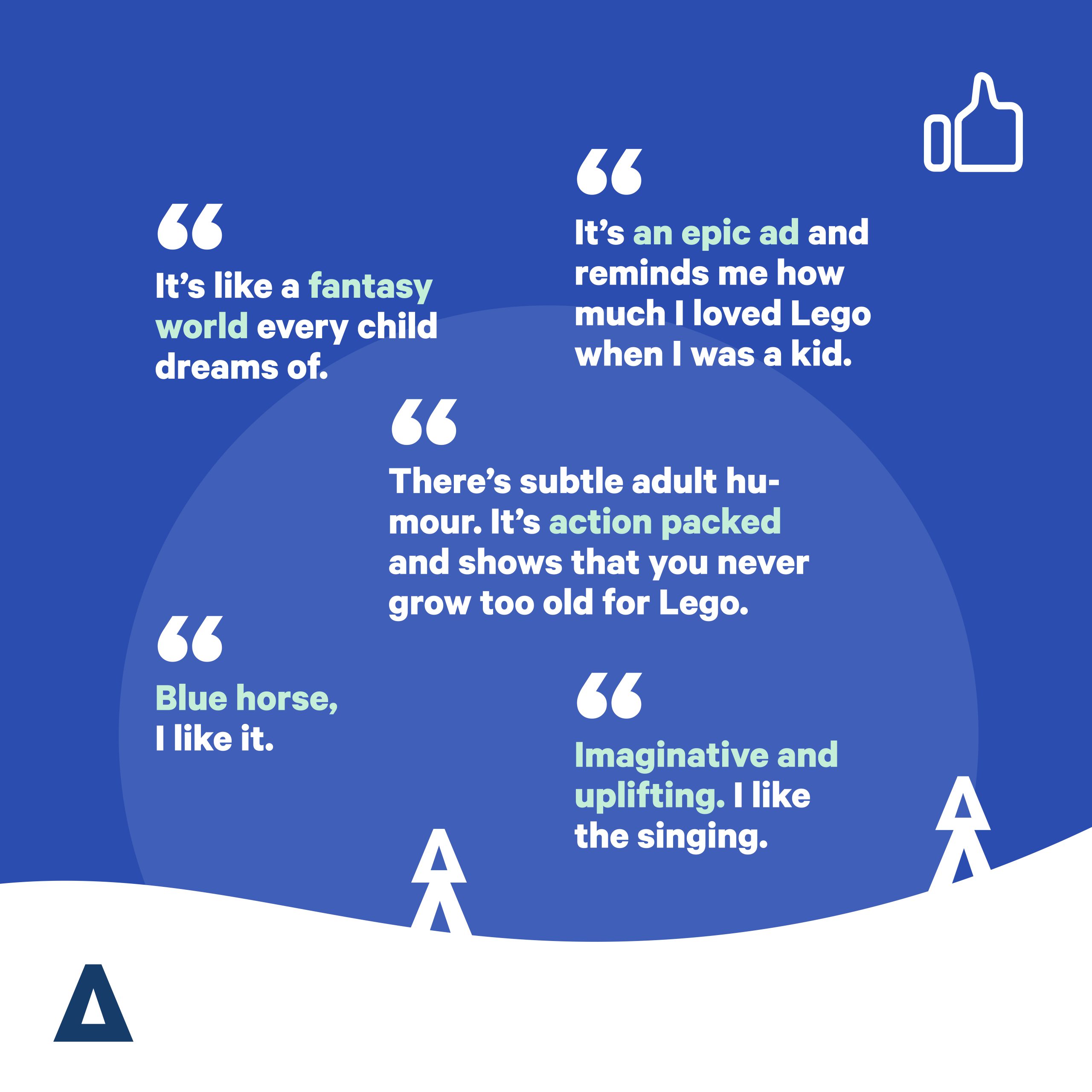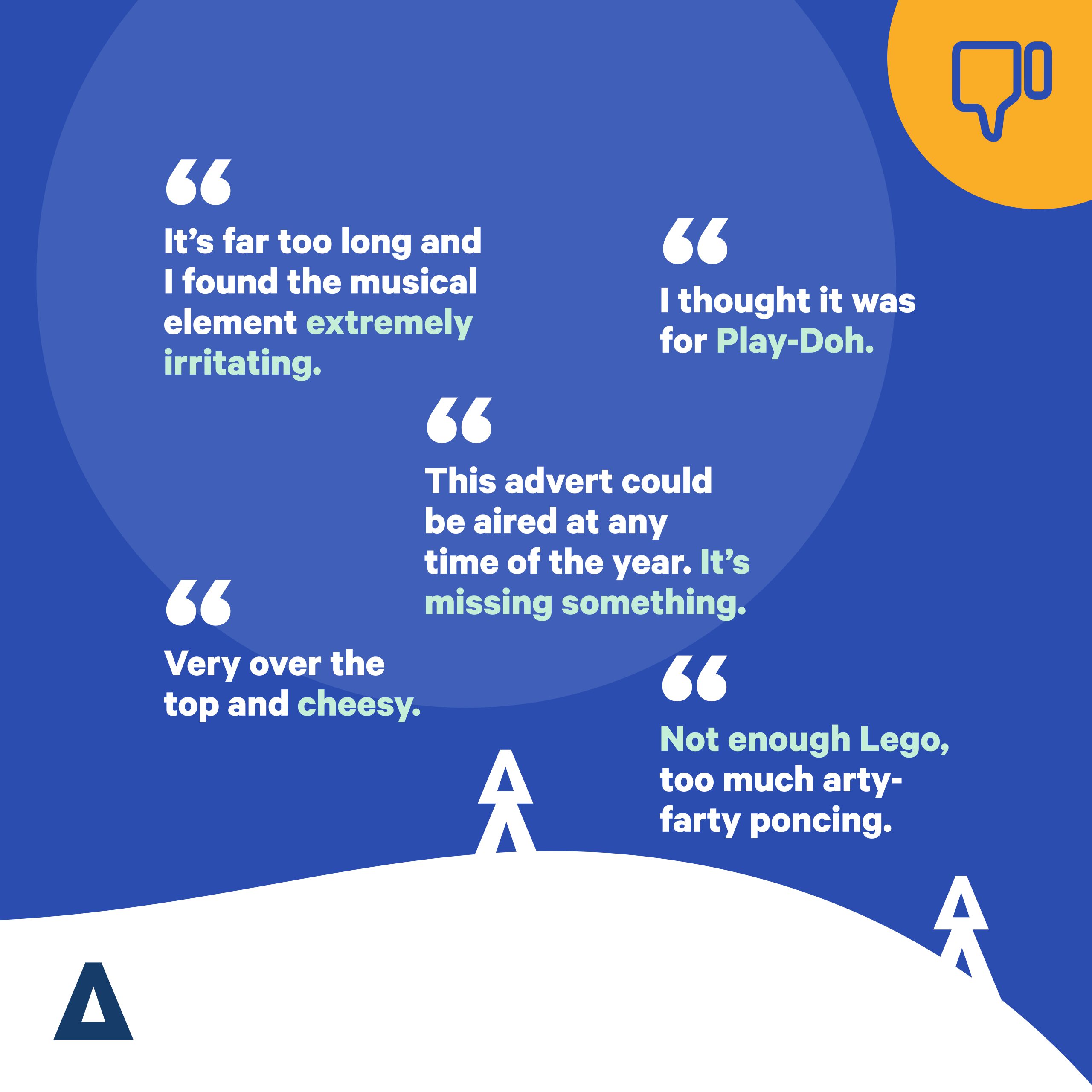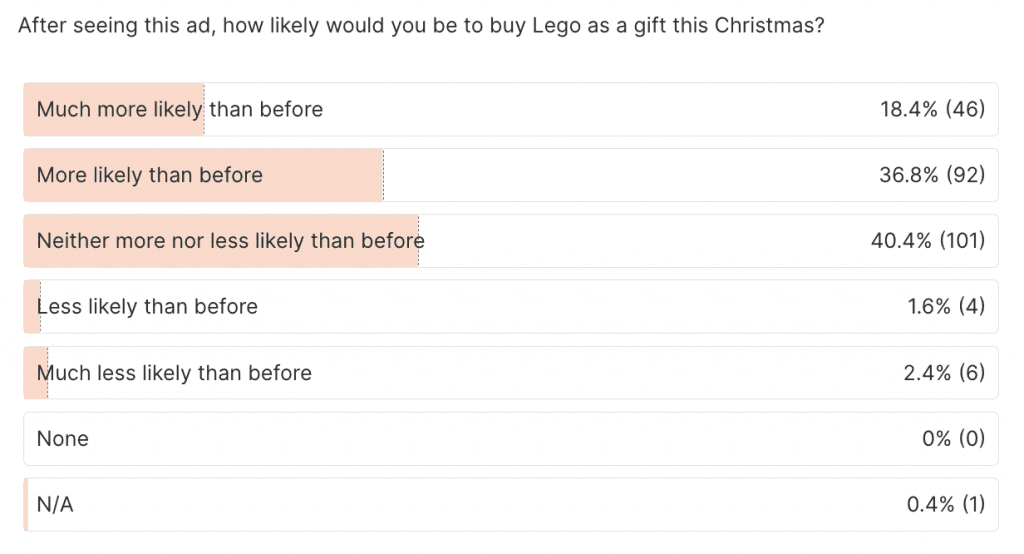Lego’s Christmas ad is the most emotionally engaging of 2020. But why?

Lego’s Christmas ad has been declared the most emotionally engaging festive ad of the year. But just what is it about the ad that’s captured viewers' hearts? We used Attest to find out.
Lego’s 2020 festive campaign has been declared the most emotionally engaging Christmas ad of the year, according to data from video advertising platform Unruly. But just what is it about the ad that’s captured viewers’ hearts? We used Attest to find out.
The ad, ‘And I think to myself’ showcases Lego’s ability to encourage creativity, set to the tune of the Louis Armstrong classic ‘What a Wonderful World’. It’s upbeat and lighthearted, showing how children’s imaginations can bring anything, from a blue horse to a fire breathing dragon, to life.
According to Unruly, the Lego ad is not just the best of the bunch this Christmas; it’s one of the best they’ve ever tested. It triggered an “intense emotional reaction” from 39% of viewers, beating the regional norm of 20% by some margin (but Amazon’s Xmas ad, which we also tested recently, wasn’t that far behind at 38%).
“The most remarkable thing about Lego’s ad is that it achieves such a strong response without any hint of ‘sadvertising’,” said Rebecca Waring, Global VP of Insights at Unruly.
“This is completely in line with Lego’s brand and with what UK consumers are looking for – our research shows that despite (or perhaps because of) mixed feelings about Christmas itself this year, people want ads that make them feel warm, happy, nostalgic and inspired.”
So, how does Lego’s Christmas ad make people feel?
Using the Attest platform, we asked 250 UK consumers to watch Lego’s ad and tell us their initial response to it. An impressive 44% of people said they “love it”, although that’s only one percentage point more than the 43% scored by Amazon’s ballerina ad.
A further 39.5% of Brits said they “liked” the ad, giving it a total positive score of 83.5% (versus Amazon’s 79%). Only 6% of viewers felt negatively towards the ad, while 10.5% were neutral.

When asked about the emotions the advert makes viewers feel, the most popular answer was “happy” (64%), proving the ad hit the ‘feel good’ mood Unruly referenced. More than a third of people also felt optimistic after watching the ad, and 32% felt inspired.
What’s interesting is that the ad, despite being decidedly modern with all sorts of special effects, made 33% of people feel nostalgic. Clearly, the essence of the ad, reminding us of the magic of childhood, struck a chord with grown-up viewers.
Very few people said they felt negative emotions after watching Lego’s festive ad, but those who did, were most likely to feel bored (8%).

Now let’s dig a little deeper into the Christmas ad…
We know that Lego’s ad is making people feel happy, but what are the elements provoking this emotion? We can get far greater insight by letting respondents tell us in their own words. Lots of comments mentioned how visually exciting the ad is and the humour incorporated in many of the scenes. People also liked that Lego’s ad was made for the whole family, and praised it for being “inclusive”. Here’s what they said…

While the vast majority of people had good things to say about Lego’s Christmas ad, there were some elements identified for improvement. Specifically, people felt the full-length 1.51-minute advert was too long (although this is not the version that will appear on TV). Here’s what else they said…

But will this Christmas ad get the tills ringing?
Lego may have done exceptionally well at engaging viewers with this ad, but will it make shoppers actually go out (or stay in) and buy the brand this Christmas? We asked respondents how likely they are to buy Lego as a gift after seeing the ad.

Just over 18% of people said they’re “much more likely” to buy Lego now, which is actually fewer than Amazon’s Christmas ad (20% said they were much more likely to shop on Amazon after watching it). But Lego still wins when it comes to purchase intent overall, as 37% of people are “more likely” to buy Lego (versus 28% for Amazon). That puts Lego’s total increased purchase intent at 55%, in comparison to Amazon’s 48%.
It’s a solid score, although it fails to beat Very’s 2019 animated Christmas ad, which achieved increased purchase intent of 59%. But it’s important to bear in mind that Lego is (for the most part) a child’s toy. This means it’s not relevant for all consumers.
To get a better idea of the effect the ad had on the purchase intent of shoppers who definitely will be buying for kids this Christmas, we filtered the data by parents with children aged under 13. Of this subset, 21% are much more likely to buy Lego this Christmas, and 39.5% are more likely – a total score of 60.5%. This indicates that the ad has performed very well with its target audience, and should stimulate sales.
And even if people can’t go to the shops due to the pandemic, Lego should be well placed to capture customers online, having invested heavily in e-commerce in 2019 to ward off competition from Amazon.
How emotionally engaging is your latest marketing campaign? Sign up to Attest and find out.
Tell us what you think of this article by leaving a comment on LinkedIn.
Or share it on:
